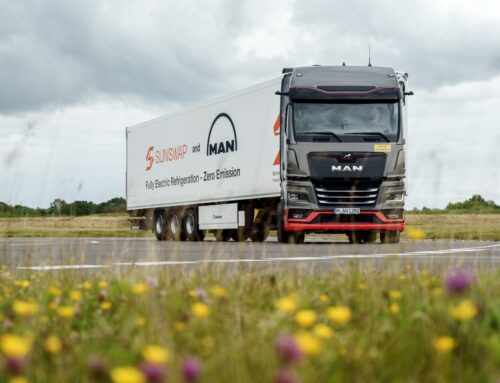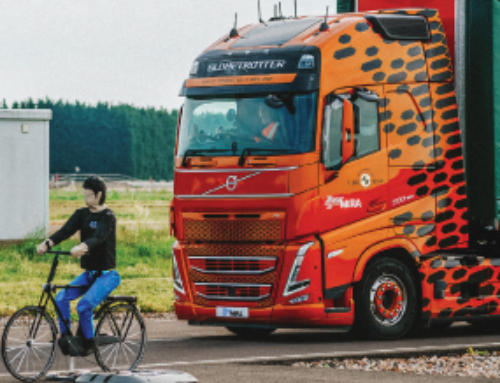Ryder: going electric will increase transport cost
 Switching to electric trucks could increase transport costs by up to 114 per cent according to research undertaken in the USA by fleet giant Ryder System.
Switching to electric trucks could increase transport costs by up to 114 per cent according to research undertaken in the USA by fleet giant Ryder System.
Faced with increased pressure from governmental authorities, American hauliers, like their British counterparts, are seeking unbiased and accurate advice about the costs and benefits of switching to battery-electric vehicles. In response, Ryder’s analysts produced a report: Charged Logistics: The Cost of Electric Vehicle Conversion for US Commercial Fleets.
Based on representative network loads and routes from Ryder’s dedicated fleet operations in today’s market, and other factors, the data shows the annual total cost to transport (TCT) by EV versus diesel is estimated to increase across the board – ranging from up to five per cent for a light-duty transit van to as much as 114 per cent for a heavy-duty tractor (depending on the geographic area). And, for a mixed fleet of 25 light-medium- and heavy-duty vehicles, the analysis shows an increased TCT of up to 67 per cent for an all-electric fleet.
Robert Sanchez, chairman and CEO of Ryder, said: “While Ryder is actively deploying EVs and charging infrastructure where it makes sense for customers today, we are not seeing significant adoption of this technology.
“For many of our customers, the business case for converting to EV technology just isn’t there yet, given the limitations of the technology and lack of sufficient charging infrastructure. With regulations continuing to evolve, we wanted to better understand the potential impacts to businesses and consumers if companies were required to transition to EV in today’s market.”
Ryder’s analysis was based on representative network loads and routes from its dedicated fleet operations, of more than 13,000 commercial vehicles and professional drivers. It factors in the cost of the vehicle, maintenance, drivers, range, payload, and diesel fuel versus electricity, while also accounting for EV charging time and equivalent delivery times. The analysis also assumes the accessibility and use of the fastest applicable commercial vehicle chargers – though this infrastructure network is not yet available.
First, Ryder conducted one-to-one comparisons for diesel and EV transit vans, rigid trucks, and heavy-duty tractors, using cost assumptions from California, which typically has the highest fuel, electricity, and labour costs in the USA, and in Georgia, where costs are generally lower.
Then, the company applied the individual costs to a fleet of 25 vehicles of mixed classes and types, and compared the cost of owning and operating that fleet in California and Georgia. The fleet mix is based on the overall mix of commercial vehicles in the USA and includes 11 light-duty vans, four medium-duty rigid trucks, and 10 heavy-duty tractors.
Overall, the report finds large increases in the up-front cost of electric vehicles, and these rise exponentially with vehicle size. A BE van is 71 per cent more expensive to purchase than a diesel equivalent, a medium-duty truck 216 per cent more expensive, and a heavy-duty tractor about 500 per cent!
Other costs that increase when an EV is substituted for a diesel include labour (due to ‘dead time’ spent charging and reduced payloads), and general and administrative costs, including reduced productivity.
Again, the larger the vehicle, the less attractive a business proposition it is. With heavy tractors, it takes almost two electrics to do the work of one diesel, and more than two drivers, compared to 1.2 drivers to utilise a diesel tractor. Much of this is attributable to battery weight reducing payload and reduced up-time because of battery charging.
Cost savings are made on fuel and maintenance. In California, fuel bills for BE vans were 71 per cent lower than diesel, medium-duty trucks saved 57 per cent on fuel and heavy-duty 52 per cent. Maintenance cost savings were 22 per cent for vans and trucks.
In Georgia, the savings from switching to battery power were less, thanks to lower fuel prices. Here the TCT for a heavy-duty tractor rises by 114 per cent!
The Californian figures are probably closer to what might be achieved in the UK, as our energy costs are more comparable. Here the overall increase in cost for switching a van to electric is three per cent per annum, for a medium-duty truck 22 per cent, and for a heavy-duty tractor 94 per cent.
Overall, Ryder calculates that the cost of switching the American road freight industry to battery power would result in an increase of 0.5 to one per cent in consumer inflation as the costs were passed on.
Karen Jones, EVP and head of new product development for Ryder, said: “There are specific applications where EV adoption makes sense today, but the use cases are still limited. Yet we’re facing regulations aimed at accelerating broader EV adoption when the technology and infrastructure are still developing.
“Until the gap in TCT for heavier duty vehicles is narrowed or closed, we cannot expect many companies to make the transition; and, if required to convert in today’s market, we face more supply chain disruptions, transportation cost increases, and additional inflationary pressure.”










